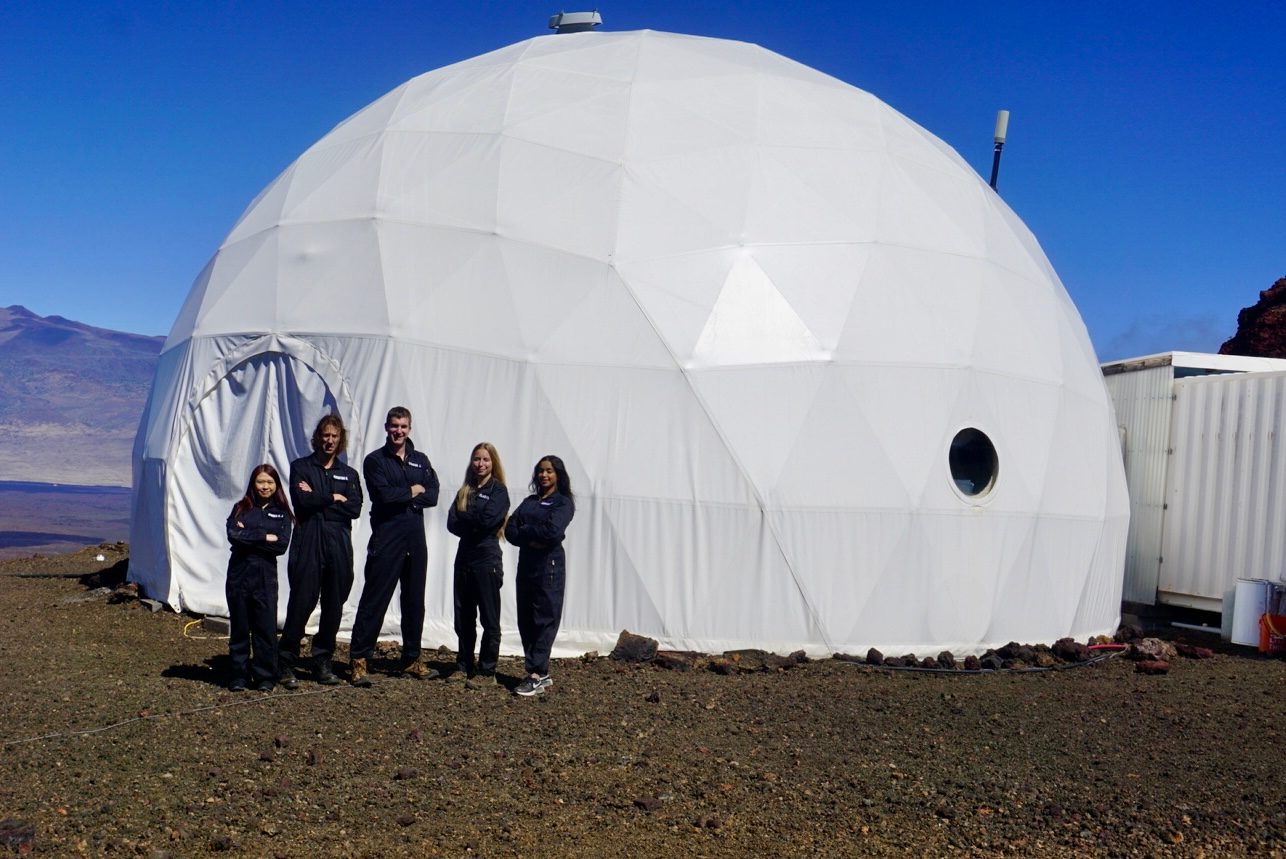SUMMARY
This is AI generated summarization, which may have errors. For context, always refer to the full article.

MANILA, Philippines – Filipino analog astronaut Kristine Atienza says people who can be bored for a very long time tend to have the advantage as analog astronauts at the Hawai’i Space Exploration Analog and Simulation (HI-SEAS).

HI-SEAS is a Mars and Moon exploration analog research station, where analog astronauts simulate arriving and living on Mars or the Moon. HI-SEAS analog astronauts have to live in a small habitat — a 1,200 square-foot dome on the Mauna Loa volcano in Hawai’i — with only five other analog astronauts or less.
For their day-to-day activities, analog astronauts have to go outside for extravehicular activities, like searching for NASA equipment and going down lava tubes — on top of doing their research in their respective fields. Atienza, a nutrition specialist, spent her days in the mission doing research on space nutrition.
During her live AMA (Ask Me Anything) session with Rappler, Atienza said the analog space mission is meant to find out which kind of people are best to send to live on Mars or the Moon. As part of the program, analog astronauts have to answer psychological surveys, which include questions like what time they slept and if they had conflicts with other crew members.
Atienza mentioned that space programs in past years would typically recruit sporty and adventurous people as astronauts. But Atienza said these are not requirements to become an analog astronaut, especially since adventure-seekers usually have a hard time expelling energy when enclosed in a small habitat for a long time.
“They’re looking for people who can be bored for a very, very long time. Imagine yourself living in Mars — or even just enclosed in a capsule traveling to Mars for four months. Can you do that? Can you be sitting in a capsule for four months?” Atienza said in a mix of Filipino and English.
Luckily for introverted Atienza, six days were not enough to make her feel bored. “The six days were not enough,” Atienza said in Filipino. “I’m very introverted. So I really like the feeling when I was inside the habitat.”
Dealing with crew members
Those who tuned in live to the AMA session were also curious about whether tension arose among the crew members during Atienza’s six-day stay at HI-SEAS.
“How do I start?” Atienza said with a laugh.
Fortunately, no big arguments occurred during Atienza’s HI-SEAS experience. But even when the program ran for just a few days, tension rose among the crew members when faced with dilemmas, like whether they should risk going down certain lava tubes or not during extravehicular activities.
Atienza mentioned conflicts like these were talked about in their daily debriefing sessions before going to bed. “We talked about the tensions…. I think it went okay in the end,” Atienza said in a mix of Filipino and English.
There were also times when they had to tackle unexpected challenges, like when the plastic bag containing their feces exploded.
“Of course, there’s no plumbing system [in the habitat]…. It’s a compost toilet…. We had to compost our manure…. When we were cleaning the toilet, the plastic bag containing the manure exploded and poop scattered…. It was hard to clean,” Atienza gladly shared in Filipino.
Atienza and her fellow crew members had to clean up one of their toilet areas for half a day.
Inclusivity in space programs
For those curious during the live AMA session, Atienza also shared that persons with disability can now also go to space.
“There are parabolic missions, parabolic flights, and even analog missions — for example, for Lunaris — that they cater for [persons with disability]…. Everything is changing right now. It’s becoming more inclusive,” Atienza said.
But for 31-year-old Atienza, there was a lack of women role models in science — at least for her generation — and the field of space science is still dominated by men.
“[In] our generation, I think people would underestimate the scientific and mathematical abilities of girls at a very young age…. At that early age, that’s where you start thinking about what you want to be in the future, right? When you make little girls feel that they’re not for science, they’re not for engineering, then they would believe that,” Atienza said in a mix of Filipino and English.
Luckily for her, she had women role models in STEM growing up — one of them her mother, who was a math teacher. And she hopes the situation is different today for the younger generations.
“Today, I can see that because of social media, [science is] beginning to open up to a lot of girls…. They can see female astronauts now.” —Rappler.com
Share your thoughts and questions in Rappler’s climate change chat room.
Add a comment
How does this make you feel?
There are no comments yet. Add your comment to start the conversation.